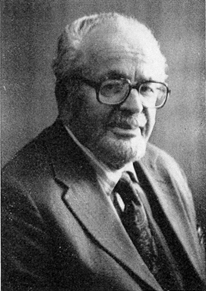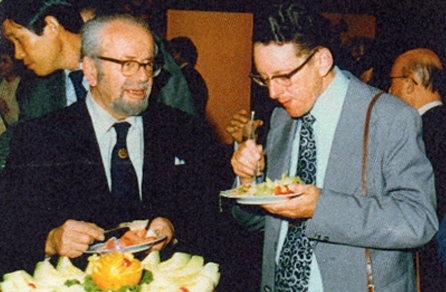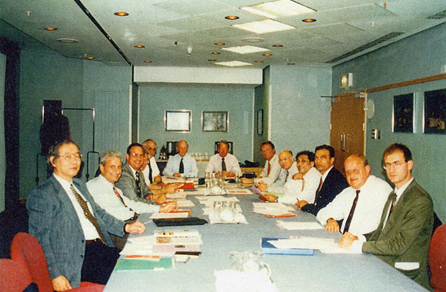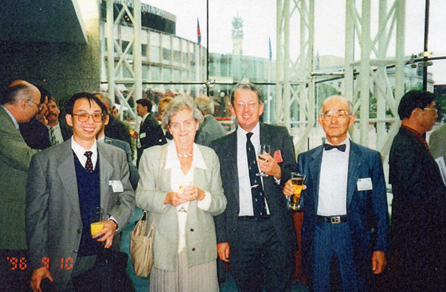Beginnings
It is universally agreed that the science of electrodeposition was discovered by L.V.Brugnatelli (a colleague of A.Volta) and the process of electrodeposition or electroplating was invented in 1839-1840by Jacobi in Russia and Elkingtons in England. It immediately led to the creation of the industrial technology of Metal Finishing. It was successful once the remarkable complexing power of cyanide was appreciated to dissolve noble metals and subsequently, by the use of electrical power, to coat engineering objects. First gold and silver and then copper, zinc and cadmium were the deposited metals. The metal finishing businesses grew and trade associations flourished. However, professional or scientific bodies were slower to develop. In 1909 the American Electroplaters Society (AES) was formed and the Electrodepositors Technical Society (EDTS) was formed in Britain. The purpose of both was to promote the exchange of technical information and to publish both science principles and technical practice. Within a few years several other societies were formed to focus attention because information was being published in general metallurgical and electrochemical journals and there were sufficient people to justify the formation of a separate specialist society in many countries. The move towards inter-country co-operation was beginning when World War 2 intervened in 1939.
The International Union for Surface Finishing (IUSF)
After the War was concluded Dr Simon Wernick, who had been the founding assistant secretary and soon secretary-general of the EDTS, decided to resume his international contacts beyond Netherlands and Belgium but largely in Europe. The need for an international conference was clear and the EDTS in Britain proposed to host the first such meeting as a continuation of the three-way meetings of the late 1930s.
At the same time he also proposed the formation of an international Union to bring Metal Finishing societies together; the proposal set out some guidelines including:
- Membership of the Union should be open to national societies concerned with technology and not trade.
- Each country should be represented by one society (this was later relaxed for large countries) but only two votes per country.
- The Council of the Union should organise periodical world congresses and delegate administration to member societies. It will meet at Interfinish Congresses and at other times and places as necessary.
- The Council should normally have one person to represent each country; they will elect a President from the next host nation, a secretary and a treasurer each to serve for four years with one re-election only.
- The fact that there are small medium and large societies shall be recognised by the size of the membership fee.
Membership rapidly grew to over 15 countries. Dr Wernick, as founding secretary, was particularly concerned that membership should cover the whole world and was responsible for gaining a spread of membership particularly in Asia and South America to a number approaching 20.
At the Paris Interfinish in 1988 the terms of the Constitution were discussed at length, some initiatives proposed and Dr Wernick was persuaded to retire as he was well-past normal retiring age. Dr David Gabe (UK) was elected secretary to serve for a term of four years only. (He was later succeeded by Bruce Wilson (Australia) in 1993, Ted Witt (USA) in 1998, Dr Giovanni Bazzani (Italy) in 2012 and Prof. Luca Magagnin (Italy) in 2015).The need to place Interfinish events on other continents was strongly supported and thus the 1980 (Congresses and 1992 in Sao Paulo, Brazil were promoted.The 1996 Congress was tentatively agreed for Europe and Birmingham, UK was later proposed and agreed.The part played by Dr Simon Wernick cannot be over emphasised and there is no doubt that his was the driving influence for many years.
A number of international initiatives have been proposed, notably a programme of training, education and certification for metal finishers. This was discussed at length during the period 1994-8, was welcomed by many smaller societies but was found difficult to reconcile with existing long-running programmes in some larger societies particularly the USA, UK and Brazil. Having English as a common language was also a barrier because junior operatives are usually only fluent in their own language.
Having a widely understood name for the profession was of concern for some years – Metal Finishing, Materials Finishing, Surface Engineering etc. While individual societies have changed their name, IUSF has remained a constant title for the worldwide body.
Dr. Simon Wernick (1903-1998): Founder Of The IUSF

Dr Simon Wernick, although born in Russia, was a Londoner from the age of 3 who was trained as a chemist at Imperial College (BSc and later PhD) and in 1925 after working for several small companies was working as a research assistant to Samuel Field at Northampton Polytechnic, part of the University of London. Field was head of the Applied Chemistry department which amongst other things taught part-time courses in metal finishing; Field was best–known as the author of the first textbook on electroplating in Britain and consequently well-known to the industry.Wernick worked as an industrial consultant largely in Britainbut also undertook some overseas missions in later years.
In 1925 a group of metal finishers formed a committee under the wing of the Faraday Society to investigate the possibility of forming a specialist society; in 1927 it was formalised as the Electrodepositors Technical Society (EDTS) for which Simon Wernick was first assistant Secretary and very soon elected Secretary-General. He undertook to encourage regional branches to be formed in Britain an activity which was noticed in neighbouring European countries. In particular Belgium and the Netherlands were interested in collaboration and discussions took place leading to the first Interfinish meetings in the period 1936 to 1939. The World War then intervened and it was not until 1947 that any co-operation began again when other countries, eg Germany, France, Italy
and Switzerland expressed interest in collaborating and Wernick took the lead in planning an event at which a formal co-operating body could be created. Thus in 1954 London hosted the fourth Interfinish meeting and the foundations of the IUSF werelaid with Wernick the first Secretary-General. Probably the first new member country was the AESF who had watched these developments with great interest especially as air travel was beginning to be a feasible means of attending conferences. By 1964 over 700 delegates and their partners registered and the Interfinish brand was duly proven and attendances remained high for many years.By 1988 in Paris it was obvious that age was beginning to show its characteristics and Dr.Wernick was persuaded that retirement from office was reasonable and he duly handed over his reins of office to Dr.David Gabe who instituted a four year term as the normal period of service and in 1993 Bruce Wilson took over from him. The inheritance was well-established and the IUSF was a fitting tribute to the initiatives of Simon Wernick besides the publications and awards he received: O.B.E. awarded by HM The Queen Institute of Metal Finishing President 1945-7, 1981-2. Gold Medal 1951, Hothersall Medal 1966. American Electroplating and Finishing Society Scientific Achievememt Award 1986 Senior Author of Surface treatment and finishing of aluminium and its alloys. 9 with R.Pinner and P.Sheasby). 4thEdn. (3 vols), 1987 Editor of Transactions of IMF for 50 years.


The opening session and banquet at the London (1964) Interfinish Congress.

Dr Wernick and Dr Gabe at Kyoto (1980)

The IUSF Council in session

Dr and Mrs Gabe welcoming overseas guests (Dr LiauYongzhong from China and Prof T Hayashi from Japan) at Birmingham (1996)
